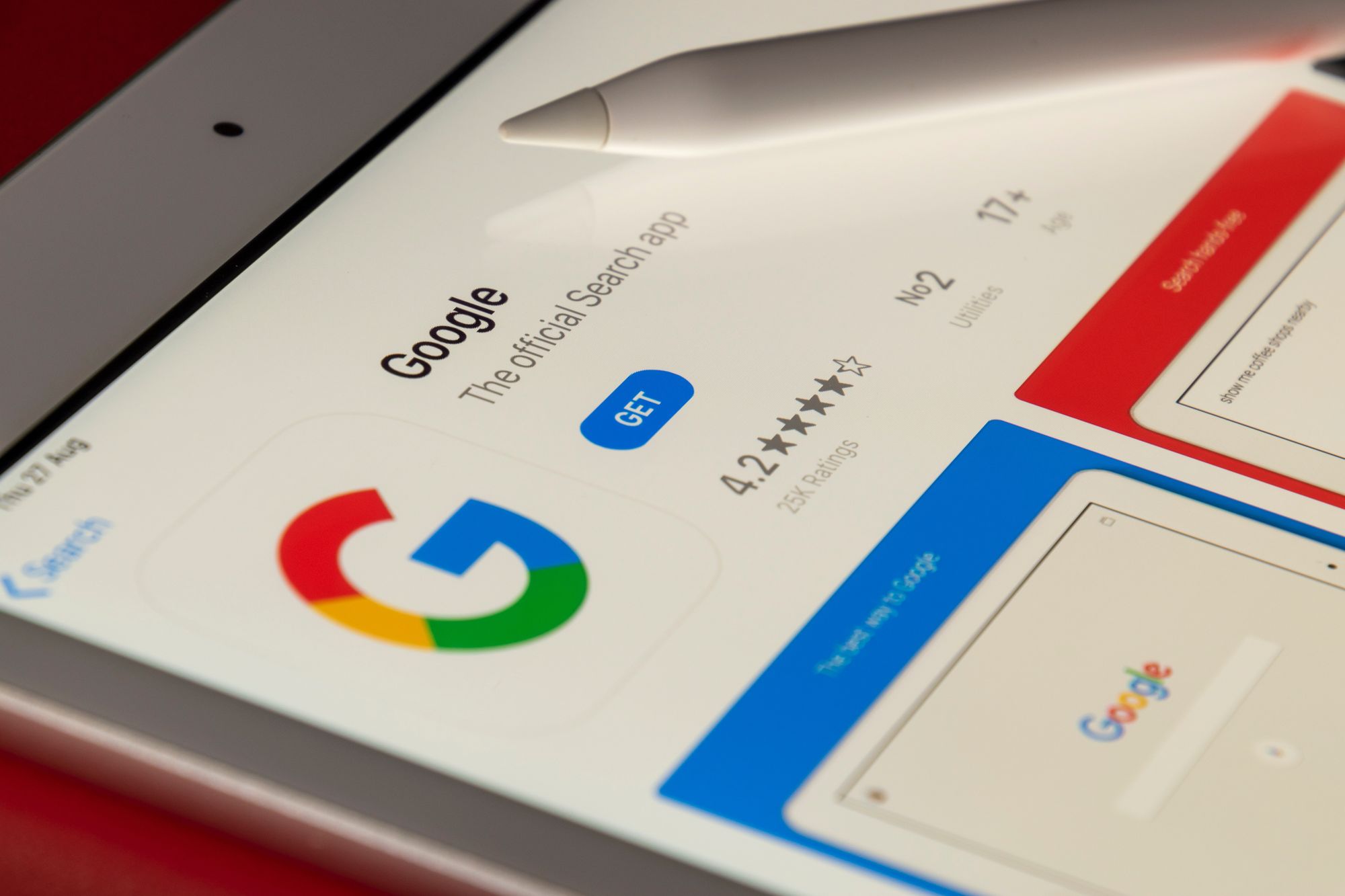Traffic monetization is the process of generating revenue from online traffic by implementing various strategies and techniques. It involves leveraging the volume and quality of traffic to convert visitors into paying customers or to generate income through advertisements and partnerships.
Implementing traffic monetization strategies can provide several benefits for online businesses and publishers.
Firstly, it allows them to generate revenue from their website or app, turning their online presence into a source of income. By effectively monetizing their traffic, businesses can diversify their revenue streams and achieve financial sustainability.
Furthermore, traffic monetization strategies can also help increase conversion rates. By targeting relevant ads or implementing affiliate marketing programs, businesses can attract the right audience and enhance the likelihood of visitors making a purchase or taking a desired action. This ultimately leads to higher conversion rates and increased profitability.
Overall, traffic monetization strategies play a crucial role in transforming online traffic into tangible financial returns. By leveraging various techniques such as display ads, affiliate marketing, and email marketing, businesses can monetize their traffic effectively and maximize their revenue potential.
- What Is Traffic Monetization?
- Advertising Networks & Platforms
- Types Of Digital Products To Monetize Your Traffic
- Strategies For Increasing Conversion Rates And Generating Revenue From Traffic Monetization
- Rounding Up
What Is Traffic Monetization?
Traffic monetization refers to the various methods and strategies implemented by online businesses and publishers to generate revenue from the traffic they receive on their websites or apps. It involves converting the volume of visitors into monetary gains by leveraging advertising and affiliate marketing programs.
One of the key objectives of traffic monetization is to transform a website or app into a profitable venture. By effectively implementing monetization strategies, businesses can turn their online presence into a reliable source of income. This is especially important for publishers who rely heavily on their content to attract and engage visitors.
Moreover, traffic monetization strategies play a crucial role in increasing conversion rates.
By targeting relevant ads or leveraging affiliate marketing programs, businesses can align their offerings with the interests and needs of their audience. This not only enhances the user experience but also increases the likelihood of visitors making a purchase or taking a desired action.
As a result, businesses can achieve higher conversion rates and improved profitability.
In summary, traffic monetization is vital for online businesses and publishers seeking to generate revenue from their website or app. It not only allows them to diversify their revenue streams but also helps increase conversion rates, ultimately leading to financial sustainability and profitability.
Benefits Of Traffic Monetization
Traffic monetization presents several benefits for websites and mobile apps, allowing them to generate revenue and create a sustainable business model. By implementing various monetization methods, businesses can unlock the potential for financial gains.

One primary benefit is revenue generation. Websites and apps can sell ad space to advertisers, enabling them to reach their target audience and generate income through display ads or banner ads.
Additionally, sponsored posts offer another avenue for revenue generation, as businesses can collaborate with brands and publish content that promotes their products or services.
Another advantage is the potential for earning passive income. Once the monetization strategies are established, businesses can continue to generate revenue with minimal effort on their part.
This means that even when they are not actively involved, they can still earn income through ad placements or paid memberships.
However, it's important to note that achieving a successful monetization model requires experience, testing, and optimization. Businesses need to constantly analyze and adjust their strategies based on traffic volumes, conversion rates, and user feedback.
By continuously improving their approach, they can maximize their revenue potential and ensure long-term profitability.
In conclusion, traffic monetization offers the opportunity to generate revenue for websites and mobile apps through various methods such as selling ad space and sponsored posts. It also enables businesses to earn passive income, although it requires experience and ongoing optimization to achieve optimal results.
Advertising Networks & Platforms
Advertising networks and platforms play a crucial role in traffic monetization. These networks connect website or app owners with potential advertisers, allowing them to earn revenue by displaying ads to their audience.

One popular example is Google AdSense, a platform that enables publishers to monetize their websites through contextual ads. Ad networks provide a convenient and efficient way for businesses to generate income without having to actively seek out advertisers themselves.
They offer a wide range of ad formats, including display ads, native banners, and video ads, ensuring maximum visibility and engagement for advertisers.
By partnering with an advertising network or using a monetization platform, website and app owners can take advantage of the large pool of advertisers available and easily monetize their traffic.
These networks also provide useful tools and analytics to help optimize and track the performance of ads, allowing businesses to make data-driven decisions to improve their revenue potential.
- Google Adsense
- Affiliate Networks & Programs
- Display Ads & Banner Ads
- Search Engines For Traffic Monetization
Google Adsense
Google Adsense is an advertising program from Google that allows website owners to generate income by allowing ads on their websites. Website owners can apply to be an AdSense partner by creating an AdSense account and adding the provided ad code to their website.
The process of applying to be an AdSense partner is relatively straightforward. Website owners need to meet certain criteria in order to be approved.
These criteria include having a well-designed website with valuable content that complies with Google's policies on ad placement. Typically, website owners need to have a minimum number of pages with sufficient traffic to be considered for approval.
Once approved, advertisers pay Google for clicks on their ads, and website owners receive a share of the advertising revenue. This revenue is generated based on the number of clicks or impressions the ads receive on the website.
The income generated through Google Adsense can vary depending on factors such as the website's traffic volumes, conversion rates, and the cost per click of the ads.
Overall, Google Adsense offers website owners an opportunity to monetize their traffic by allowing ads on their sites. It is a popular and effective method for website owners to generate income while providing valuable content to their audience.
Affiliate Networks & Programs
In addition to Google AdSense, website owners have the option to monetize their traffic through various affiliate networks and programs. These platforms allow website owners to earn commission by promoting products or services on their websites.
One popular affiliate network is Rakuten Advertising, formerly known as LinkShare. Rakuten Advertising offers a wide range of merchants across different industries and provides access to tools and resources for effective affiliate marketing strategies.
ShareASale is another well-known affiliate network that connects website owners with merchants in various niches. ShareASale offers a user-friendly platform with a variety of promotional materials and robust reporting features.
Clickbank is a digital marketplace that specializes in digital products, making it ideal for website owners in niches such as online courses, e-books, and software. Clickbank offers high commission rates and provides tools for tracking sales and earnings.
Amazon Associates is another top choice for affiliate marketers. By joining Amazon Associates, website owners can earn commission by promoting millions of products available on Amazon.
Affiliate programs typically work by providing website owners with unique affiliate links. When visitors click on these links and make a purchase or perform a specific action (such as signing up for a service), the website owner earns a commission.
Joining affiliate programs can offer several benefits, such as the potential to earn passive income, access to a wide range of products or services to promote, and the chance to diversify revenue streams.
With proper promotion and high-quality traffic, affiliate marketing can be a lucrative strategy for monetizing website traffic.
Display Ads & Banner Ads
Display ads and banner ads are two popular forms of advertising that can be used for traffic monetization.
Display ads are visual advertisements that are placed on websites and mobile apps. They can come in various formats, such as static images, animated GIFs, videos, or interactive rich media.
These ads are typically placed strategically on web pages where they are likely to capture the attention of visitors.
On the other hand, banner ads are a specific type of display ad that appear at the top, bottom, or sides of a web page. They are usually rectangular in shape and contain an image or text-based message that promotes a product or service.
Both display ads and banner ads work by capturing the attention of website visitors and enticing them to click on the ad. When a visitor clicks on the ad, they are typically redirected to the advertiser's website, and the website owner earns revenue either through a cost-per-click (CPC) or cost-per-impression (CPM) model.
There are several popular ad networks and platforms that offer display and banner ads for website owners to monetize their traffic. Google AdSense, Media.net, and PropellerAds are well-known ad networks that provide a wide range of display ad options.
Additionally, advertising platforms like Facebook Ads and Amazon Advertising also offer display and banner ad opportunities.
To optimize revenue generation from display and banner ads, website owners should focus on creating high-quality and relevant content that attracts and engages their target audience. They should also experiment with different ad formats, placements, and sizes to find what works best for their website.
Regularly monitoring and analyzing ad performance using tools like Google Analytics can help website owners make data-driven decisions to improve ad optimization.
To summarize, display ads and banner ads are effective tools for traffic monetization. They offer website owners the opportunity to earn revenue through clicks or impressions.
By partnering with ad networks and platforms and implementing best practices for ad optimization, website owners can maximize their revenue generation potential.
Search Engines For Traffic Monetization
Search engines play a crucial role in driving organic traffic to websites, making them an essential tool for effective traffic monetization. By implementing various strategies and techniques, website owners can leverage search engines to attract targeted visitors and generate revenue.
One of the most important aspects of search engine traffic monetization is search engine optimization (SEO). This involves optimizing your website to rank higher in search engine results pages (SERPs) for relevant keywords.
By identifying and incorporating the right keywords into your website's content, meta tags, and headings, you increase the likelihood of appearing in top search results.
Targeting organic traffic is also vital for successful traffic monetization. Organic traffic refers to visitors who find your website through unpaid search engine results.
By providing valuable and relevant blog posts that aligns with search intent, you can attract organic traffic and increase the chances of visitors engaging with your monetization strategies.

Several popular search engines can be utilized for traffic monetization, such as Google, Bing, and Yahoo. These search engines have massive user bases, providing ample opportunities to reach a wide audience and capitalize on monetization efforts.
In conclusion, search engine traffic monetization through effective SEO strategies and targeting organic traffic is key to increasing your website's revenue potential.
By understanding the importance of keywords, search engine optimization, and organic traffic, website owners can maximize their efforts in driving quality traffic and achieving successful traffic monetization.
Types Of Digital Products To Monetize Your Traffic
There are various types of digital products that can be utilized to monetize your website traffic effectively. These products can cater to different audience preferences and provide valuable solutions or entertainment.
One popular digital product is an e-book or digital guide, which allows you to share your expertise or insights on a specific topic. You can create and sell these digital products directly on your website or use platforms like Amazon Kindle to reach a wider audience.
Another option is online courses or webinars, where you can offer in-depth knowledge or training on a particular subject. These can be sold individually or as part of a membership program.
Additionally, software or mobile applications can provide valuable tools or services to your audience and generate revenue through paid downloads or in-app purchases.
Digital products like templates, graphics, and stock photos are also in high demand by businesses and content creators, and can be sold on platforms like Etsy or your own website.
By choosing the right digital product based on your expertise and target audience's needs, you can effectively monetize your website traffic and generate steady income.
- Digital Services/Products
- Digital Content (eBooks, Videos, etc.)
- Subscriptions & Memberships
- Physical Products/Merchandise
Digital Services/Products
Digital services and products are an effective way to monetize website traffic and generate income online. By offering valuable digital content, website owners can tap into a variety of revenue streams and diversify their monetization strategy.
One profitable avenue for traffic monetization is the sale of digital products. These products can include online courses, ebooks, photos, and web elements such as templates and designs. By creating and selling these digital assets, website owners can leverage their expertise and provide valuable resources to their audience.
On the other hand, selling digital services can also be a lucrative option. From web design and development to social media management and content creation, offering services can generate a steady income.

However, it is important to note that the income potential may be limited compared to selling digital products.
Both digital services and products have their benefits and drawbacks. While digital product sales allow for passive income and scalable revenue, the creation and marketing process can be time-consuming and require ongoing effort.
On the other hand, selling services can generate income more quickly, but it may require more active involvement and limit the scalability of earnings.
In conclusion, leveraging digital services and products is a valuable strategy for traffic monetization. By understanding the benefits and drawbacks of each option, website owners can choose the approach that aligns best with their goals and resources.
Digital Content (eBooks, Videos, etc.)
Digital content encompasses various forms such as eBooks, videos, podcasts, and online courses, that can be effectively used for traffic monetization. When creating digital content, it is important to identify the needs and interests of the target audience to provide valuable and engaging resources.
eBooks are a popular option for sharing in-depth knowledge and expertise. They can be created in various formats, such as PDF or ePub, and cover topics that resonate with the target audience.
Videos, on the other hand, offer a visual and interactive experience for users. These can include tutorials, webinars, or even short informative clips to engage and educate the audience.
To monetize digital content effectively, website owners can utilize different strategies.
One approach is to sell the content directly to the audience through platforms like Amazon Kindle or through their own website. Alternatively, they can offer premium or exclusive content behind a paywall or a subscription model.Offering digital content provides several benefits and revenue streams.
It allows for passive income generation, as the content can be sold repeatedly without much additional effort.
Additionally, it can boost credibility and brand authority, attracting potential advertisers or sponsors. Moreover, digital content can be repurposed and used as lead magnets to build an email list and drive additional traffic to the website.
To maximize revenue opportunities, website owners can incorporate affiliate links within their digital content. By partnering with relevant affiliate programs, they earn a commission for each sale generated through these links, generating additional income.
Overall, digital content creation and monetization offer great potential for traffic monetization, providing valuable resources to the audience while generating revenue through various channels.
Subscriptions & Memberships
Subscriptions and memberships are highly effective strategies for monetizing websites. By offering exclusive content or access to a community, website owners can generate a steady stream of recurring revenue.
There are different models available for monetizing traffic through memberships. The subscription-based model involves charging a regular fee in exchange for access to premium content or services. This model is ideal for websites that consistently produce valuable content that users are willing to pay for.
Another model is the transaction-based model, where users pay for access to specific resources or services on a one-time basis. This model is particularly useful for websites that offer specialized or high-value products.
A metered model is also an option, where users can access a certain amount of content for free but then have to pay for additional content. This model allows website owners to strike a balance between free and paid content, enticing users to upgrade to a paid membership for unlimited access.
To set up a paywall for memberships on a WordPress website, website owners can use member site plugins like MemberPress or Restrict Content Pro. These plugins enable the creation of exclusive member areas, membership levels, and payment gateways, making it easy to manage subscriptions and monetize valuable content.
In conclusion, subscriptions and memberships offer an effective way to monetize website traffic. By implementing the right model and utilizing powerful plugins, website owners can generate recurring revenue while providing exclusive content and services to their loyal audience.
Physical Products/Merchandise
One effective way to monetize website traffic is through selling physical products and merchandise. This strategy involves creating an online store or utilizing e-commerce platforms to offer a range of products for sale.
Website owners can set up online stores by using platforms such as Shopify, WooCommerce, or BigCommerce. These platforms provide user-friendly interfaces and features for managing inventory, processing payments, and fulfilling orders.
Additionally, they often offer customizable themes and plugins to create a visually appealing and seamless shopping experience for customers.
There is a wide range of physical products that can be sold online to monetize website traffic. Popular options include clothing and apparel, accessories, electronics, home goods, beauty products, and more. It's essential to choose products that align with your website's niche and target audience to maximize sales potential.
Selling physical products comes with its pros and cons. On the positive side, it can open up various revenue streams and potentially provide higher profit margins compared to digital products. Additionally, physical products have the advantage of tangible value and appeal to consumers who prefer tactile experiences.
However, there are some challenges to consider. Managing inventory, shipping logistics, and customer returns can be time-consuming and require additional resources. It's also essential to stay updated with market trends, competition, and customer preferences to ensure a successful sales strategy.
Overall, selling physical products and merchandise presents a lucrative opportunity for website owners to monetize their traffic, expand their reach, and diversify their revenue streams.
By setting up online stores and carefully selecting appealing products, website owners can tap into the growing e-commerce market and generate income.
Strategies For Increasing Conversion Rates And Generating Revenue From Traffic Monetization
To effectively monetize website traffic, it is crucial to focus on increasing conversion rates and generating revenue.
One effective strategy is to implement display ads and affiliate links. Display ads, such as Google AdSense, can provide a steady stream of income by placing relevant advertisements on your website. Affiliate links, on the other hand, allow you to earn commissions by promoting products or services that are related to your website's content.
Another strategy to boost conversion rates is to provide valuable content and create a seamless user experience.
By offering high-quality and informative content, you can attract and engage your target audience, increasing the likelihood of them making a purchase or clicking on an affiliate link.
Additionally, optimizing your website for mobile devices, improving page load speed, and simplifying the checkout process can enhance the user experience and boost conversions.
Email marketing is another powerful tool for driving revenue from traffic monetization. Building an email list allows you to establish a direct line of communication with your audience and promote your products or affiliate links. By sending targeted and personalized emails, you can nurture and convert leads into paying customers.
Lastly, leveraging social media platforms can also help generate revenue from your website's traffic. By sharing valuable content and offers on platforms such as Facebook, Instagram, or Twitter, you can reach a wider audience and drive more traffic to your site.
Additionally, incorporating social sharing buttons on your website can encourage visitors to share your content, further increasing your reach and potential conversions.
By implementing these strategies, website owners can increase conversion rates and generate revenue from their traffic monetization efforts.
Quality Content Creation & Optimization
Quality content creation and optimization play a crucial role in traffic monetization. When it comes to attracting and retaining website visitors, nothing is more important than providing unique and valuable content. This not only helps to drive more traffic to your site but also increases the chances of generating revenue.
Having unique and valuable content sets your website apart from competitors and establishes your credibility as a trusted source of information. It not only attracts organic traffic through search engines but also encourages visitors to spend more time on your site, increasing engagement and conversions.
To create high-quality content, it is essential to conduct thorough research to understand your target audience's needs and interests. Analyzing your competitors' content can provide valuable insights into what works and what doesn't.
By developing a content plan, you can ensure that your content is well-organized and caters to your audience's preferences.
Optimizing your content for search engines is equally important. Incorporating relevant keywords, writing compelling meta descriptions, and using internal and external links can improve your website's visibility and organic traffic.

In conclusion, quality content creation and optimization are essential for traffic monetization. By providing unique and valuable content, you can drive more traffic to your website, increase engagement, and ultimately boost revenue.
Utilizing Email Lists & Newsletters
Utilizing email lists and newsletters is a powerful strategy for traffic monetization. Building an email list allows you to connect with your audience directly, nurturing a relationship by providing valuable information and resources.

First and foremost, it is crucial to focus on building your email list with engaged subscribers. Clear call-to-action buttons and sign-up forms on every page of your website encourage visitors to join your list.
Pop-ups, though sometimes controversial, can be effective in capturing email addresses, especially when offering freebies or exclusive content in exchange for signing up.
Once you have a sizeable email list, you can start monetizing through email marketing. Utilize affiliate links to promote products or services that align with your audience's interests. Direct sales can also be conducted through email, offering your own products or services to your subscribers.
Another monetization method is incorporating simple advertising in your newsletters. You can sell advertising space to relevant brands or use banner ads within the email content. Just ensure that the ads are not overwhelming and do not compromise the quality of your newsletter.
Building strong relationships with your email list subscribers by consistently providing valuable information will increase their trust in you, making them more receptive to your monetization efforts.
By effectively utilizing email lists and newsletters, you can leverage your subscriber base to generate consistent traffic and increase your overall revenue.
Rounding Up
To summarize, building an engaged email list and implementing effective email marketing strategies are essential steps in traffic monetization.
By providing valuable content and utilizing affiliate links, you can generate revenue from your list of subscribers. Incorporating advertising in newsletters can also be a profitable monetization method, as long as it does not compromise the quality of your content.
It is important to prioritize user intent when monetizing traffic. By understanding the needs and interests of your audience, you can tailor your monetization efforts to offer relevant products and services. This will increase the likelihood of conversions and generate more revenue.
Additionally, it is crucial to avoid disruptive ads that can negatively impact user experience. By carefully selecting and placing ads, you can maintain a positive user experience while still generating income.
Optimizing site performance and ensuring fast loading speeds will also contribute to a positive user experience and increase the chances of conversions.
Overall, traffic monetization requires a strategic approach that focuses on providing valuable content, understanding user intent, and optimizing site performance. By implementing these strategies, you can effectively monetize your traffic and generate sustainable revenue.







